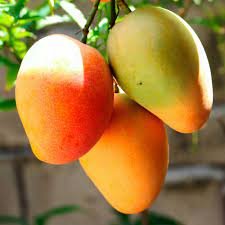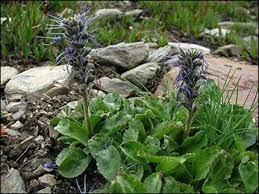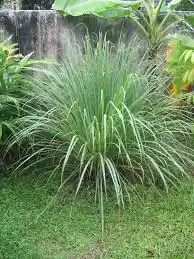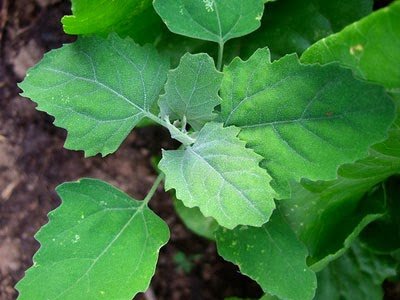Saffron (Crocus sativus) Nutrition Requirements
Nutrition required by Saffron (Crocus sativus) at each stage of its life cycle.
SOIL PREPARATION
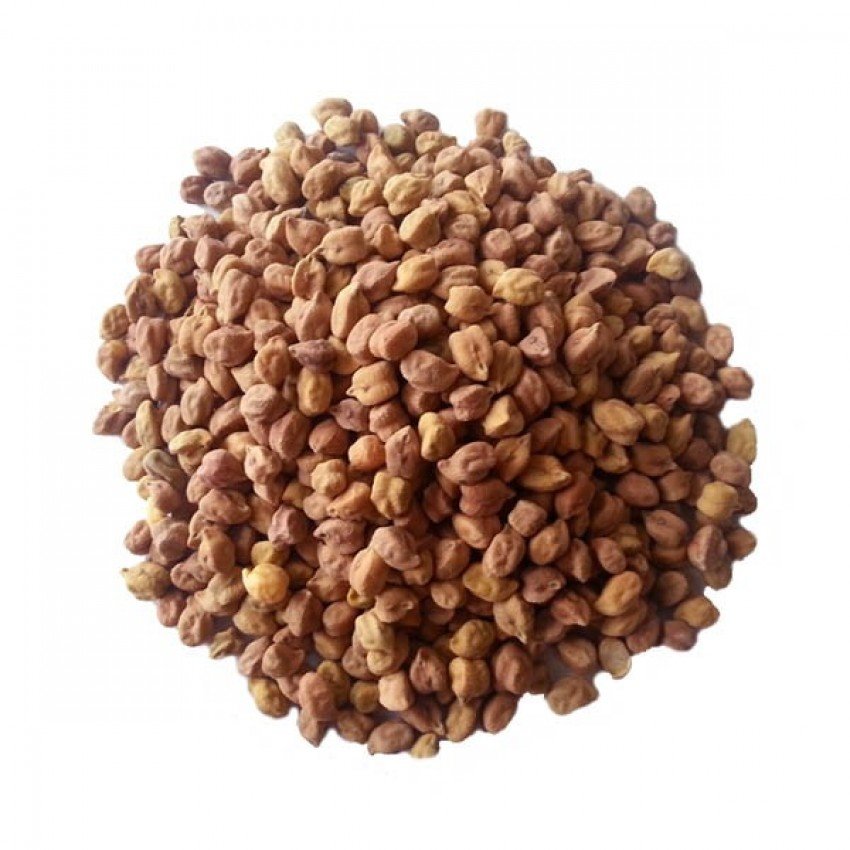
Soil Preparation
Saffron (Crocus sativus) is a valuable spice derived from the dried stigmas of the saffron crocus flower. Proper soil preparation is essential for saffron cultivation to ensure optimal growth and yield.
Here's a guide to soil preparation and nutrition requirements at the soil preparation stage for saffron:
Soil Preparation Method:
1. Soil Type:
Saffron thrives in well-draining, sandy loam or sandy clay loam soil with a pH range of 6 to 8.5. It's essential to choose a site with good drainage to prevent waterlogging, as saffron bulbs can rot in waterlogged conditions.
2. Site Selection:
Choose a sunny location with full sun exposure for saffron cultivation. Ensure the site is free from shade and receives at least 6 to 8 hours of direct sunlight daily.
3. Soil Preparation:
- Clear the planting area of any weeds, rocks, and debris.
- Loosen the soil to a depth of at least 20 to 25 centimeters (8 to 10 inches) using a garden fork or tiller. Saffron bulbs grow relatively shallow, so it's essential to loosen the soil adequately.
- Incorporate well-decomposed organic matter such as compost or aged manure into the soil to improve soil structure, fertility, and moisture retention.
- Level the soil surface and remove any large clumps or rocks.
Nutrition Requirement:
1. Soil Testing:
Before planting saffron bulbs, conduct a soil test to assess soil fertility and pH levels. Soil testing helps determine the nutrient requirements and any necessary soil amendments.
2. Soil Amendments:
- Adjust soil pH if necessary to the optimal range of 6 to 8.5 for saffron cultivation. Lime can be added to raise pH, while elemental sulfur can be used to lower pH.
- Based on the soil test results, incorporate balanced organic or slow-release fertilizers into the soil to provide essential nutrients for saffron growth. Saffron has moderate fertility requirements, so avoid excessive nitrogen fertilization, which can promote foliage growth over flower production.
3. Micronutrients:
- Saffron plants require micronutrients such as iron, zinc, manganese, and copper for healthy growth and flower development. If soil tests indicate micronutrient deficiencies, consider incorporating micronutrient-rich amendments or applying foliar sprays during the growing season as needed.
4. Organic Matter:
- Organic matter plays a crucial role in soil fertility and structure. Incorporating compost, aged manure, or other organic amendments enriches the soil with nutrients and improves soil texture, water retention, and microbial activity.
5. Mulching:
- After planting saffron bulbs, apply a layer of organic mulch such as straw or shredded leaves to conserve soil moisture, suppress weed growth, and regulate soil temperature.
By following these soil preparation methods and addressing the nutrition requirements at the soil preparation stage, you can create optimal growing conditions for saffron cultivation. Regular soil maintenance, including weed control and irrigation management, is essential throughout the growing season to ensure healthy saffron plant growth and abundant flower production.
Early Growth (Germination to Establishment)

Early Growth
The early growth stage in saffron (Crocus sativus) cultivation involves the period from germination to establishment of the plants. During this stage, the focus is on providing the necessary nutrients to support the development of healthy corms (bulb-like structures), roots, and foliage.
Here are the key nutrition requirements for saffron during the early growth stage:
1. **Soil Nutrients:**
- **Nitrogen (N):**
Saffron requires nitrogen for early vegetative growth. However, excessive nitrogen can lead to increased foliage at the expense of flower production, so it's crucial to provide a balanced amount.
- **Phosphorus (P):**
Phosphorus is essential for root development and energy transfer within the plant. Adequate phosphorus promotes healthy corm establishment.
- **Potassium (K):**
Potassium supports overall plant vigor and contributes to corm development and disease resistance.
2. **Organic Matter:**
- Incorporating well-decomposed organic matter into the soil during the early growth stage enhances soil structure, water retention, and nutrient availability. Compost or aged manure can be added to improve the organic content of the soil.
3. **Micronutrients:**
- Saffron plants benefit from essential micronutrients, including iron, zinc, manganese, and copper. These micronutrients play crucial roles in enzyme activation, chlorophyll synthesis, and overall plant health. If micronutrient deficiencies are identified through soil testing, appropriate amendments or foliar applications may be necessary.
4. **pH Adjustment:**
- Ensure that the soil pH is within the optimal range of 6 to 8.5. Saffron prefers a slightly acidic to neutral soil pH. If necessary, adjust the pH using lime to raise it or elemental sulfur to lower it.
5. **Water Management:**
- Saffron plants need consistent moisture during the early growth stage. Adequate watering is essential for corm development and overall plant health. However, it's crucial to avoid waterlogging, as saffron bulbs are susceptible to rot in overly wet conditions.
6. **Fertilizer Application:**
- Apply a balanced, slow-release fertilizer with a formulation such as 10-10-10 or 14-14-14, ensuring that the nitrogen content is not excessively high. Broadcast the fertilizer evenly over the planting area, following recommended application rates based on soil test results.
7. **Mulching:**
- Mulching the saffron bed with straw or organic mulch helps conserve soil moisture, suppress weeds, and regulate soil temperature, creating favorable conditions for early growth.
It's important to monitor the saffron plants regularly during the early growth stage for signs of nutrient deficiencies, pests, or diseases. Adjustments to fertilization practices can be made based on plant performance and soil nutrient levels. Additionally, practicing good irrigation management and weed control further contribute to the success of saffron cultivation during the early growth stage.
Tillering Stage (Shoot Development)

Tillering Stage
During the tillering stage, which encompasses shoot development in saffron (Crocus sativus) cultivation, the focus is on promoting healthy foliage growth, strengthening corms, and preparing the plants for flowering.
Here are the key nutrition requirements for saffron during the tillering stage:
1. **Nitrogen (N):**
- Nitrogen is essential for promoting vigorous vegetative growth and the development of healthy shoots and foliage during the tillering stage. However, excessive nitrogen can lead to excessive vegetative growth at the expense of flower production. It's essential to provide a balanced amount of nitrogen to support optimal shoot development without compromising flower yield.
2. **Phosphorus (P):**
- Phosphorus plays a crucial role in root development, energy transfer, and overall plant growth. Adequate phosphorus is necessary during the tillering stage to support the formation of strong roots and healthy shoots, facilitating the uptake of nutrients and water.
3. **Potassium (K):**
- Potassium contributes to plant vigor, disease resistance, and overall plant health. During the tillering stage, potassium supports the development of robust shoots, improves stress tolerance, and enhances nutrient uptake and utilization.
4. **Micronutrients:**
- Essential micronutrients such as iron, zinc, manganese, and copper are vital for various physiological processes in saffron plants, including shoot development, enzyme activation, and chlorophyll synthesis. Ensure that the soil contains adequate levels of these micronutrients to support healthy growth during the tillering stage.
5. **Calcium (Ca) and Magnesium (Mg):**
- Calcium and magnesium are secondary macronutrients that play essential roles in cell wall formation, nutrient uptake, and enzyme activation. Adequate levels of calcium and magnesium are necessary during the tillering stage to support strong, healthy shoots and foliage.
6. **pH Adjustment:**
- Maintain the soil pH within the optimal range of 6 to 8.5 to ensure proper nutrient availability and uptake. Adjust the pH if necessary using lime to raise it or elemental sulfur to lower it, based on soil test results.
7. **Organic Matter:**
- Incorporating organic matter such as compost or aged manure into the soil during the tillering stage improves soil structure, water retention, and nutrient availability, promoting healthy shoot development and overall plant vigor.
8. **Water Management:**
- Adequate moisture is essential during the tillering stage to support active shoot development and root growth. Maintain consistent soil moisture levels, avoiding both waterlogging and drought stress, to ensure optimal nutrient uptake and plant growth.
By meeting these nutrition requirements during the tillering stage, saffron growers can promote healthy shoot development, strengthen corms, and prepare the plants for the subsequent stages of flowering and bulb formation. Regular monitoring of plant growth and soil fertility is crucial for optimizing nutrient management and achieving successful saffron cultivation.
Flowering

Flowering
During the flowering stage in saffron (Crocus sativus) cultivation, the emphasis shifts towards supporting robust flower development, enhancing flower quality, and promoting optimal yield of saffron threads (stigmas).
Here are the key nutrition requirements for saffron during the flowering stage:
1. **Phosphorus (P):**
- Phosphorus plays a crucial role in flower formation and development. Adequate phosphorus availability during the flowering stage promotes healthy flower bud initiation, development, and blooming.
2. **Potassium (K):**
- Potassium is essential for flower quality and overall plant health. During the flowering stage, potassium supports flower color, aroma, and size. It also contributes to disease resistance and stress tolerance in saffron plants.
3. **Calcium (Ca) and Magnesium (Mg):**
- Calcium and magnesium are vital for flower structure and development. Calcium supports cell wall formation, while magnesium is involved in chlorophyll synthesis and enzyme activation. Adequate levels of calcium and magnesium are necessary to ensure healthy flower growth and quality.
4. **Nitrogen (N):**
- While nitrogen is essential for vegetative growth, excessive nitrogen during the flowering stage can negatively impact saffron flower yield and quality. It's crucial to provide a balanced amount of nitrogen to support flower development without promoting excessive vegetative growth.
5. **Sulfur (S):**
- Sulfur is a constituent of amino acids and proteins, playing a role in flower color and aroma development. Adequate sulfur availability during the flowering stage contributes to vibrant flower color and aroma in saffron threads.
6. **Micronutrients:**
- Essential micronutrients such as iron, zinc, manganese, and copper are crucial during the flowering stage to support various physiological processes in saffron flowers. These micronutrients contribute to enzyme activation, pigment formation, and overall flower health.
7. **Boron (B):**
- Boron is essential for flower development and pollen germination. Adequate boron availability during the flowering stage supports healthy flower formation and reproductive processes in saffron plants.
8. **pH Adjustment:**
- Maintain the soil pH within the optimal range of 6 to 8.5 to ensure proper nutrient availability and uptake during the flowering stage. Adjust the pH if necessary using lime or elemental sulfur based on soil test results.
9. **Water Management:**
- Adequate soil moisture is essential during the flowering stage to support flower development and prevent stress-related issues. Maintain consistent soil moisture levels, avoiding both waterlogging and drought stress, to optimize flower quality and yield.
By meeting these nutrition requirements during the flowering stage, saffron growers can promote healthy flower development, enhance flower quality, and maximize saffron thread yield. Regular monitoring of plant health and soil fertility is essential for optimizing nutrient management and achieving successful saffron cultivation during this critical stage.
Matchuration & Ripening

Matchuration & Ripening
During the maturation and ripening stage in saffron (Crocus sativus) cultivation, the emphasis is on promoting the development and maturation of saffron threads (stigmas) to achieve optimal yield and quality.
Here are the key nutrition requirements for saffron during the maturation and ripening stage:
1. **Potassium (K):**
- Potassium plays a crucial role in the maturation and ripening of saffron threads. Adequate potassium availability during this stage promotes the development of plump and fully matured saffron threads, contributing to higher quality and yield.
2. **Phosphorus (P) and Calcium (Ca):**
- Phosphorus and calcium are essential for saffron thread development and maturation. Phosphorus supports energy transfer processes, while calcium is involved in cell wall formation. Both nutrients contribute to the structural integrity and quality of saffron threads during maturation and ripening.
3. **Magnesium (Mg):**
- Magnesium is essential for chlorophyll synthesis and enzyme activation during saffron thread maturation. Adequate magnesium availability supports healthy saffron thread development and enhances saffron color and aroma.
4. **Sulfur (S):**
- Sulfur is a crucial component of amino acids and proteins, contributing to the flavor and aroma of saffron threads. Adequate sulfur availability during maturation and ripening enhances saffron thread quality and sensory attributes.
5. **Micronutrients:**
- Essential micronutrients such as iron, zinc, manganese, and copper are important during the maturation and ripening stage to support various physiological processes in saffron plants. These micronutrients contribute to enzyme activation, pigment formation, and overall saffron thread quality.
6. **Boron (B):**
- Boron plays a role in the transport of sugars and other nutrients within saffron plants, contributing to saffron thread development and maturation. Adequate boron availability during this stage supports healthy saffron thread growth and quality.
7. **pH Adjustment:**
- Maintain the soil pH within the optimal range of 6 to 8.5 to ensure proper nutrient availability and uptake during the maturation and ripening stage. Adjust the pH if necessary using lime or elemental sulfur based on soil test results.
8. **Water Management:**
- Adequate soil moisture is essential during the maturation and ripening stage to support the development and maturation of saffron threads. Maintain consistent soil moisture levels, avoiding both waterlogging and drought stress, to optimize saffron thread quality and yield.
By meeting these nutrition requirements during the maturation and ripening stage, saffron growers can promote healthy saffron thread development, enhance saffron quality, and maximize saffron yield. Regular monitoring of plant health and soil fertility is essential for optimizing nutrient management and achieving successful saffron cultivation during this critical stage.
Harvesting

Harvesting
During the harvesting stage of saffron (Crocus sativus) cultivation, there are no specific nutrition requirements as the plant is not typically harvested for its foliage. However, proper management practices are crucial to ensure the quality and yield of saffron threads.
Here are the nutrition requirements and procedures to be followed at the harvesting stage for saffron:
1. **Timing of Harvesting:**
- Saffron threads are harvested from the stigma of the saffron flower (Crocus sativus) when they reach full maturity and are bright red in color.
- Harvesting typically occurs during the autumn months when the flowers bloom.
2. **Harvesting Method:**
- Saffron threads are harvested by hand-picking the stigma from the flowers. This delicate process requires skilled labor to carefully extract the threads without damaging them.
- Harvesting is usually done early in the morning when the flowers are still closed to preserve the freshness and quality of the saffron threads.
3. **Drying Process:**
- After harvesting, the saffron threads are dried to remove moisture and preserve their flavor, aroma, and color.
- The threads are spread out on trays or screens in a well-ventilated area and left to dry naturally for several days.
- Care should be taken to avoid exposing the saffron threads to direct sunlight during the drying process, as this can cause them to lose their color and flavor.
4. **Storage:**
- Once the saffron threads are fully dried, they are stored in airtight containers or jars to protect them from moisture, light, and air.
- Proper storage conditions include a cool, dry, and dark environment to preserve the quality and freshness of the saffron threads.
5. **Post-Harvest Management:**
- After harvesting and drying, it's essential to clean and sanitize the harvesting tools and equipment to prevent the spread of diseases and pests.
- Proper sanitation practices should be followed throughout the drying and storage process to maintain the quality of the saffron threads.
By following these procedures during the harvesting stage, you can ensure the production of high-quality saffron threads with the desired color, flavor, and aroma, ready for culinary use or further processing.
Saffron (Crocus sativus) Farming Economics
Get details of Profitability and cost estimate in growing Saffron (Crocus sativus) per acres of Land.
SOIL PREPARATION

Soil Preparation
Early Growth (Germination to Establishment)

Early Growth
Tillering Stage (Shoot Development)

Tillering Stage
Flowering

Flowering
Matchuration & Ripening

Matchuration & Ripening
Harvesting

Harvesting
Saffron (Crocus sativus) Disease Details
Nutrition required by Saffron (Crocus sativus) at each stage of its life cycle.
SOIL PREPARATION

Soil Preparation
During the soil preparation stage in saffron (Crocus sativus) cultivation, several diseases and pests can affect the health and growth of saffron bulbs.
Here are some common diseases and pests that can occur at the soil preparation stage, along with precautions to prevent their occurrence:
1. **Fungal Diseases:**
- **Rhizoctonia Rot:**
This fungal disease affects saffron bulbs during the soil preparation stage, causing rotting of the corms. To prevent Rhizoctonia rot, avoid planting saffron bulbs in poorly drained or waterlogged soils. Ensure proper soil drainage and avoid excessive irrigation.
- **Fusarium Wilt:**
Fusarium wilt can also affect saffron bulbs, leading to wilting and decline of the plant. To prevent Fusarium wilt, choose disease-resistant saffron bulb varieties and ensure proper soil sanitation practices. Avoid planting saffron bulbs in soils with a history of Fusarium wilt.
2. **Bacterial Diseases:**
- **Bacterial Soft Rot:**
Bacterial soft rot can affect saffron bulbs, causing softening and decay of the corms. To prevent bacterial soft rot, practice proper soil sanitation and avoid planting saffron bulbs in waterlogged or poorly drained soils. Rotate crops to reduce disease buildup in the soil.
3. **Pests:**
- **Nematodes:**
Nematodes can infest saffron bulbs, causing damage to the roots and reducing plant vigor. To prevent nematode infestations, practice crop rotation with non-host plants and avoid planting saffron bulbs in soil with a history of nematode infestation. Use certified nematode-free saffron bulbs for planting.
- **Wireworms and White Grubs:**
Wireworms and white grubs can feed on saffron bulbs, causing damage and reduced plant growth. To prevent infestations, avoid planting saffron bulbs in fields with a history of wireworm or white grub infestations. Monitor fields regularly for pest activity and employ appropriate control measures if necessary.
4. **Weeds:**
- Weed competition can negatively impact saffron bulb growth and development during the soil preparation stage. To prevent weed infestations, practice proper weed management techniques such as hand weeding, mulching, and pre-emergent herbicide application before planting saffron bulbs.
Precautionary Measures:
- Conduct soil tests to assess soil health and fertility before planting saffron bulbs. Amend the soil with organic matter and necessary nutrients based on soil test results to create optimal growing conditions for saffron.
- Ensure proper soil drainage and avoid waterlogging to prevent fungal diseases such as Rhizoctonia rot and Fusarium wilt.
- Practice crop rotation with non-host plants to reduce the buildup of soilborne pathogens and pests that can affect saffron bulbs.
- Use certified disease-free and nematode-free saffron bulbs for planting to minimize the risk of disease and pest infestations.
- Monitor fields regularly for signs of disease, pest infestation, and weed growth during the soil preparation stage, and take appropriate measures to manage and control them.
By following these precautions and preventive measures during the soil preparation stage, saffron growers can minimize the risk of disease and pest infestations and promote healthy saffron bulb growth and development.
Early Growth (Germination to Establishment)

Early Growing
During the early growth stage of saffron (Crocus sativus) cultivation, several diseases and pests can affect the germination and establishment of saffron corms (bulb-like structures).
Here are some common diseases and pests that can occur during the early growth stage, along with precautions to prevent their occurrence:
1. **Fungal Diseases:**
- **Rhizoctonia Rot:**
This fungal disease can affect saffron corms during germination, leading to rotting and poor establishment of the corms. To prevent Rhizoctonia rot, ensure proper soil drainage and avoid planting saffron corms in waterlogged or poorly drained soils. Practice crop rotation to reduce disease buildup in the soil.
2. **Bacterial Diseases:**
- **Bacterial Soft Rot:**
Bacterial soft rot can affect saffron corms during the early growth stage, causing softening and decay of the corms. To prevent bacterial soft rot, practice proper soil sanitation and avoid planting saffron corms in waterlogged or poorly drained soils. Choose disease-resistant saffron varieties if available.
3. **Pests:**
- **Wireworms and White Grubs:**
Wireworms and white grubs can feed on saffron corms during germination and establishment, causing damage and reduced plant vigor. To prevent infestations, avoid planting saffron corms in fields with a history of wireworm or white grub infestations. Monitor fields regularly for pest activity and employ appropriate control measures if necessary.
4. **Weeds:**
- Weed competition can negatively impact saffron corm germination and establishment. Weeds can compete with saffron corms for nutrients, water, and sunlight, leading to reduced growth and establishment. To prevent weed infestations, practice proper weed management techniques such as hand weeding, mulching, and pre-emergent herbicide application.
Precautionary Measures:
- Ensure proper soil preparation before planting saffron corms, including soil drainage improvement and incorporation of organic matter.
- Plant saffron corms in well-drained soils to prevent waterlogging, which can contribute to fungal diseases such as Rhizoctonia rot.
- Use disease-free and healthy saffron corms for planting to minimize the risk of disease and pest infestations during germination and establishment.
- Monitor saffron corms regularly for signs of disease, pest infestation, and weed growth during the early growth stage, and take appropriate measures to manage and control them.
- Provide optimal growing conditions for saffron corms, including proper irrigation, adequate sunlight, and appropriate spacing between corms to promote healthy germination and establishment.
By following these precautions and preventive measures during the early growth stage, saffron growers can minimize the risk of disease and pest infestations and promote healthy germination and establishment of saffron corms.
Tillering Stage (Shoot Development)

Tillering Stage
During the tillering stage (shoot development) of saffron (Crocus sativus) cultivation, several diseases and pests can affect the growth and development of saffron plants.
Here are some common diseases and pests that can occur during the tillering stage, along with precautions to prevent their occurrence:
1. **Fungal Diseases:**
- **Leaf Spot:**
Leaf spot diseases, caused by various fungal pathogens, can affect saffron leaves during the tillering stage, leading to the development of small, dark spots on the leaves. To prevent leaf spot diseases, avoid overhead irrigation and water splashing on leaves. Provide adequate spacing between saffron plants to promote air circulation and reduce humidity around the plants.
2. **Bacterial Diseases:**
- **Bacterial Soft Rot:**
Bacterial soft rot can affect saffron corms and underground parts during the tillering stage, leading to softening and decay of the corms. To prevent bacterial soft rot, practice proper soil sanitation and avoid overwatering, which can create favorable conditions for bacterial pathogens. Avoid planting saffron corms in waterlogged or poorly drained soils.
3. **Pests:**
- **Thrips:**
Thrips can feed on saffron leaves during the tillering stage, causing damage and distortion of leaves. To prevent thrips infestations, monitor saffron plants regularly for signs of thrips feeding damage and employ appropriate insecticidal treatments if necessary. Remove and destroy infested plant debris to reduce pest populations.
4. **Weeds:**
- Weed competition can negatively impact saffron plants during the tillering stage, leading to reduced growth and development. Weeds can compete with saffron plants for nutrients, water, and sunlight. To prevent weed infestations, practice proper weed management techniques such as hand weeding, mulching, and pre-emergent herbicide application.
Precautionary Measures:
- Maintain proper plant spacing and avoid overcrowding to promote air circulation and reduce humidity around saffron plants, which can help prevent fungal diseases such as leaf spot.
- Practice proper soil drainage and irrigation management to prevent waterlogging, which can create favorable conditions for bacterial soft rot and other soilborne diseases.
- Monitor saffron plants regularly for signs of disease, pest infestation, and weed growth during the tillering stage, and take appropriate measures to manage and control them.
- Provide optimal growing conditions for saffron plants, including proper irrigation, adequate sunlight, and soil fertility, to promote healthy shoot development and tillering.
By following these precautions and preventive measures during the tillering stage, saffron growers can minimize the risk of disease and pest infestations and promote healthy growth and development of saffron plants.
Flowering

Flowering
During the flowering stage of saffron (Crocus sativus) cultivation, several diseases and pests can affect the growth and development of saffron plants and the quality of saffron threads (stigmas).
Here are some common diseases and pests that can occur during the flowering stage, along with precautions to prevent their occurrence:
1. **Fungal Diseases:**
- **Botrytis Blight (Gray Mold):**
Botrytis cinerea, the causal agent of botrytis blight, can affect saffron flowers during the flowering stage, causing gray mold development on flower parts. To prevent botrytis blight, ensure proper air circulation around saffron plants by avoiding overcrowding and maintaining appropriate plant spacing. Avoid overhead irrigation, as excess moisture can promote fungal growth.
- **Sclerotinia Rot:**
Sclerotinia sclerotiorum can infect saffron flowers during the flowering stage, leading to rotting of flower tissues. To prevent sclerotinia rot, practice proper soil sanitation and avoid planting saffron bulbs in areas with a history of sclerotinia infestations. Maintain proper plant spacing to promote air circulation and reduce humidity around the plants.
2. **Bacterial Diseases:**
- **Bacterial Leaf Blight:**
Xanthomonas campestris pv. crocicola can cause bacterial leaf blight in saffron plants during the flowering stage, resulting in yellowing and necrosis of leaves. To prevent bacterial leaf blight, avoid overhead irrigation and water splashing on leaves. Practice proper plant spacing and remove and destroy infected plant debris to reduce bacterial pathogen spread.
3. **Pests:**
- **Thrips:**
Thrips can feed on saffron flowers during the flowering stage, causing damage and distortion of petals and reproductive structures. To prevent thrips infestations, monitor saffron flowers regularly for signs of thrips feeding damage and employ appropriate insecticidal treatments if necessary. Remove and destroy infested flower parts to reduce pest populations.
Precautionary Measures:
- Maintain proper plant spacing and avoid overcrowding to promote air circulation and reduce humidity around saffron plants, which can help prevent fungal diseases such as botrytis blight and sclerotinia rot.
- Avoid overhead irrigation and water splashing on leaves and flowers to reduce the risk of fungal and bacterial diseases.
- Monitor saffron flowers regularly for signs of disease, pest infestation, and weed growth during the flowering stage, and take appropriate measures to manage and control them.
- Provide optimal growing conditions for saffron plants, including proper irrigation, adequate sunlight, and soil fertility, to promote healthy flowering and minimize stress on plants.
By following these precautions and preventive measures during the flowering stage, saffron growers can minimize the risk of disease and pest infestations and promote healthy flower development and saffron thread quality.
Matchuration & Ripening

Matchuration & Ripening
During the maturation and ripening stage of saffron (Crocus sativus) cultivation, several diseases and pests can affect the quality and yield of saffron threads (stigmas).
Here are some common diseases and pests that can occur during the maturation and ripening stage, along with precautions to prevent their occurrence:
1. **Fungal Diseases:**
- **Botrytis Blight (Gray Mold):**
Botrytis cinerea can continue to affect saffron flowers and stigma tissues during the maturation and ripening stage, causing gray mold development and rotting of saffron threads. To prevent botrytis blight, maintain proper air circulation around saffron plants, avoid overcrowding, and promptly remove and destroy infected plant debris.
- **Sclerotinia Rot:**
Sclerotinia sclerotiorum can infect saffron threads during the maturation and ripening stage, leading to rotting and decay. To prevent sclerotinia rot, practice proper soil sanitation, avoid planting saffron bulbs in areas with a history of sclerotinia infestations, and provide adequate spacing between plants to promote air circulation.
2. **Bacterial Diseases:**
- **Bacterial Soft Rot:**
Bacterial soft rot can affect saffron threads during the maturation and ripening stage, leading to softening and decay. To prevent bacterial soft rot, avoid overwatering and waterlogging, which can create favorable conditions for bacterial pathogens. Provide proper soil drainage and avoid planting saffron bulbs in poorly drained soils.
3. **Pests:**
- **Thrips:**
Thrips can continue to feed on saffron threads during the maturation and ripening stage, causing damage and discoloration. To prevent thrips infestations, monitor saffron threads regularly for signs of thrips feeding damage and employ appropriate insecticidal treatments if necessary. Remove and destroy infested threads to reduce pest populations.
Precautionary Measures:
- Maintain proper air circulation around saffron plants by avoiding overcrowding and providing adequate spacing between plants to reduce the risk of fungal diseases such as botrytis blight and sclerotinia rot.
- Monitor saffron threads regularly for signs of disease, pest infestation, and rotting during the maturation and ripening stage, and take appropriate measures to manage and control them.
- Avoid overwatering and waterlogging to prevent bacterial soft rot and other water-related diseases. Provide proper soil drainage and irrigation management to promote healthy saffron thread development.
- Practice proper soil sanitation and remove and destroy infected plant debris to reduce the spread of fungal and bacterial pathogens that can affect saffron threads during maturation and ripening.
By following these precautions and preventive measures during the maturation and ripening stage, saffron growers can minimize the risk of disease and pest infestations and promote the production of high-quality saffron threads.
Harvesting

Harvesting
During the harvesting stage of saffron (Crocus sativus) cultivation, several diseases and pests can affect the quality and yield of saffron threads (stigmas).
Here are some common diseases and pests that can occur during the harvesting stage, along with precautions to prevent their occurrence:
1. **Fungal Diseases:**
- **Botrytis Blight (Gray Mold):**
Botrytis cinerea can affect saffron threads during the harvesting stage, especially if the saffron flowers have been damaged or stressed during harvesting. To prevent botrytis blight, handle saffron flowers with care during harvesting to minimize physical damage and avoid harvesting in wet or humid conditions that promote fungal growth.
2. **Bacterial Diseases:**
- **Bacterial Soft Rot:**
Bacterial soft rot can affect saffron threads during harvesting, leading to softening and decay. To prevent bacterial soft rot, handle saffron threads carefully during harvesting to avoid bruising or damaging the delicate threads. Ensure proper sanitation of harvesting tools and equipment to prevent the spread of bacterial pathogens.
3. **Pests:**
- **Thrips:**
Thrips can continue to feed on saffron threads during the harvesting stage, causing damage and discoloration. To prevent thrips infestations during harvesting, inspect saffron threads carefully and remove any threads showing signs of thrips feeding damage. Employ appropriate insecticidal treatments if necessary to control thrips populations.
Precautionary Measures:
- Handle saffron flowers and threads with care during harvesting to minimize physical damage and reduce the risk of fungal and bacterial infections.
- Harvest saffron flowers during dry weather conditions to minimize the risk of fungal diseases such as botrytis blight.
- Ensure proper sanitation of harvesting tools and equipment to prevent the spread of bacterial pathogens that can cause soft rot.
- Inspect saffron threads carefully during harvesting and remove any threads showing signs of pest damage or disease symptoms to prevent the spread of pests and diseases.
- Practice proper post-harvest handling and storage techniques to maintain the quality and shelf life of saffron threads.
By following these precautions and preventive measures during the harvesting stage, saffron growers can minimize the risk of disease and pest infestations and promote the production of high-quality saffron threads.






